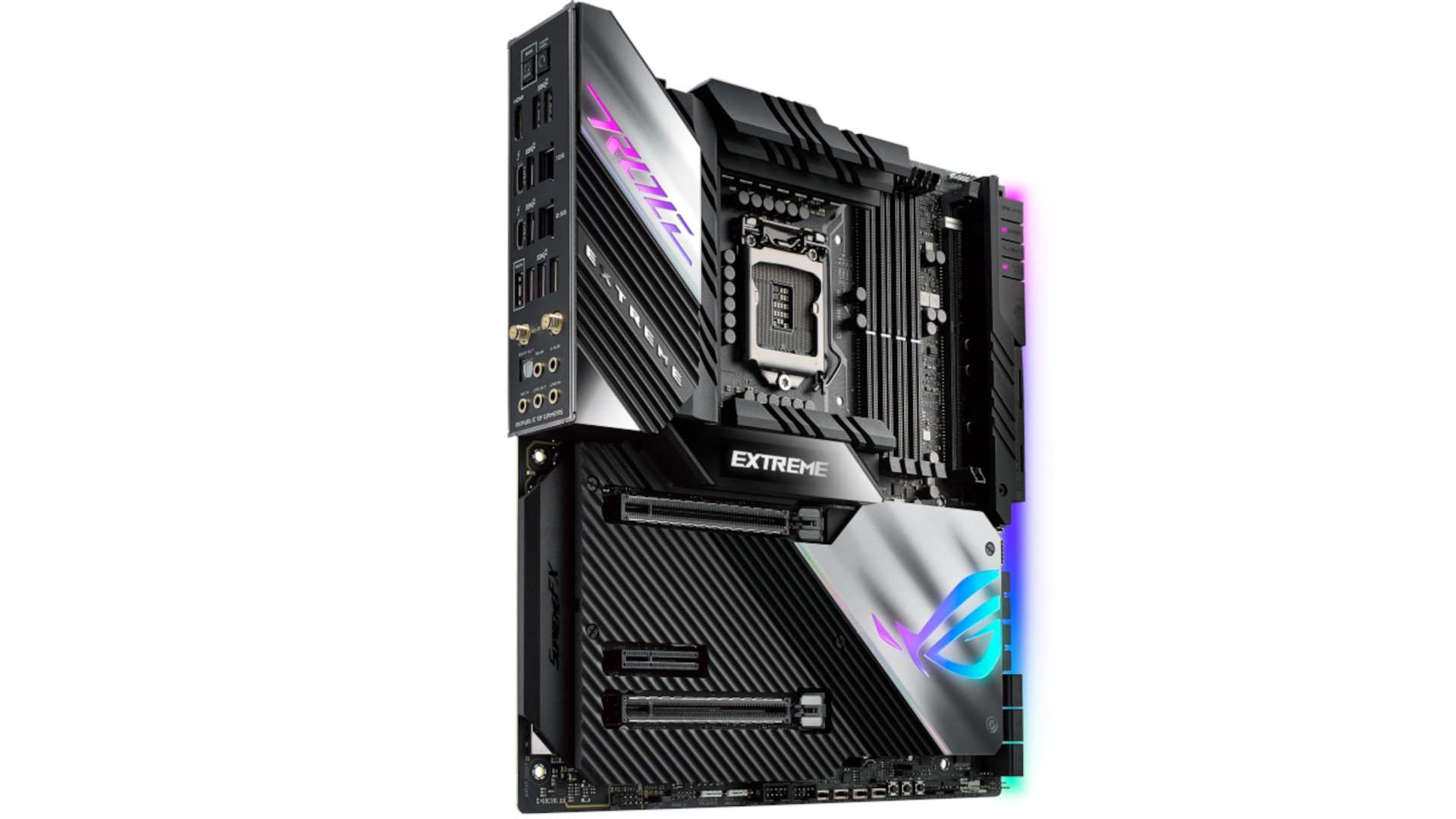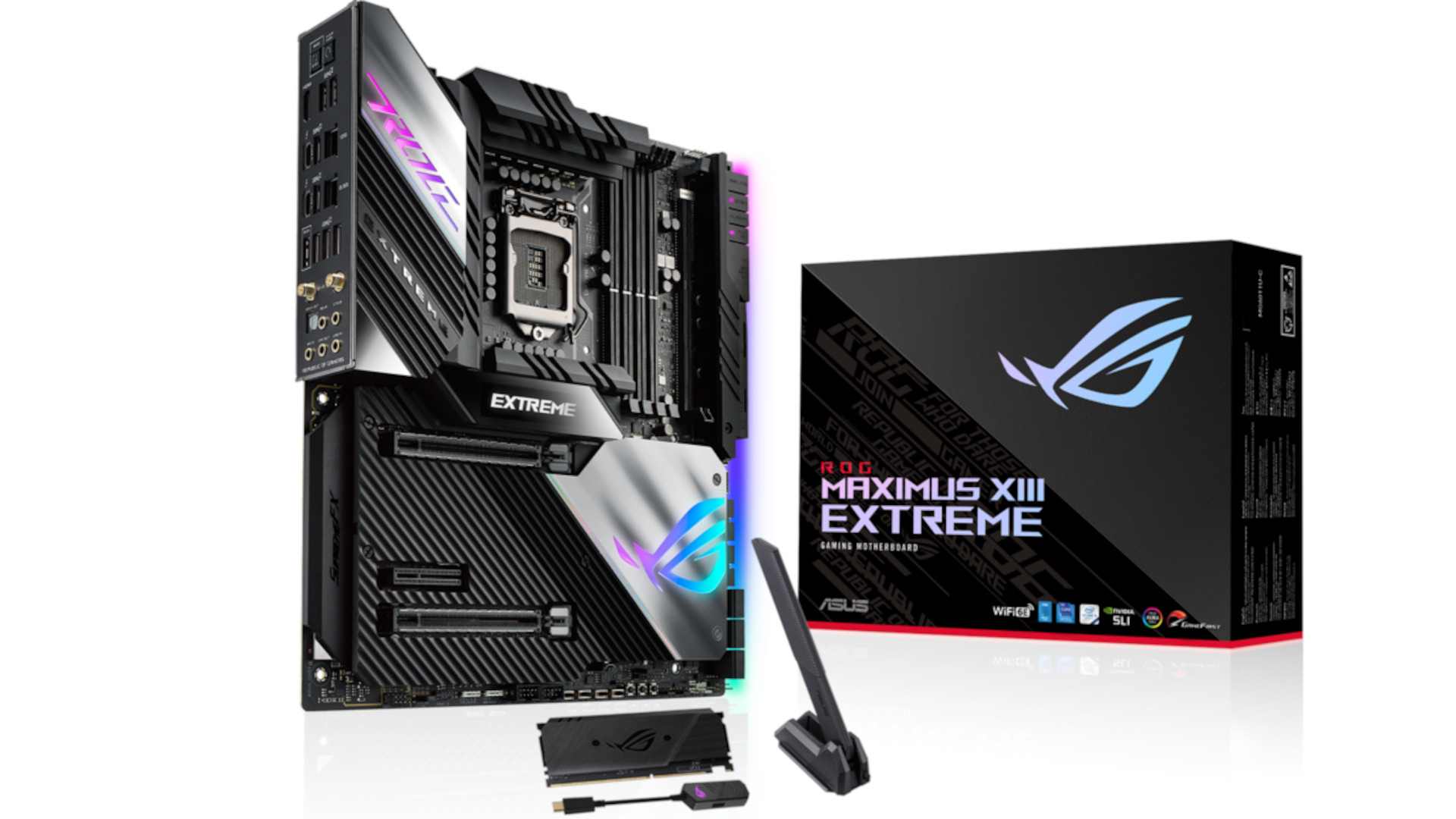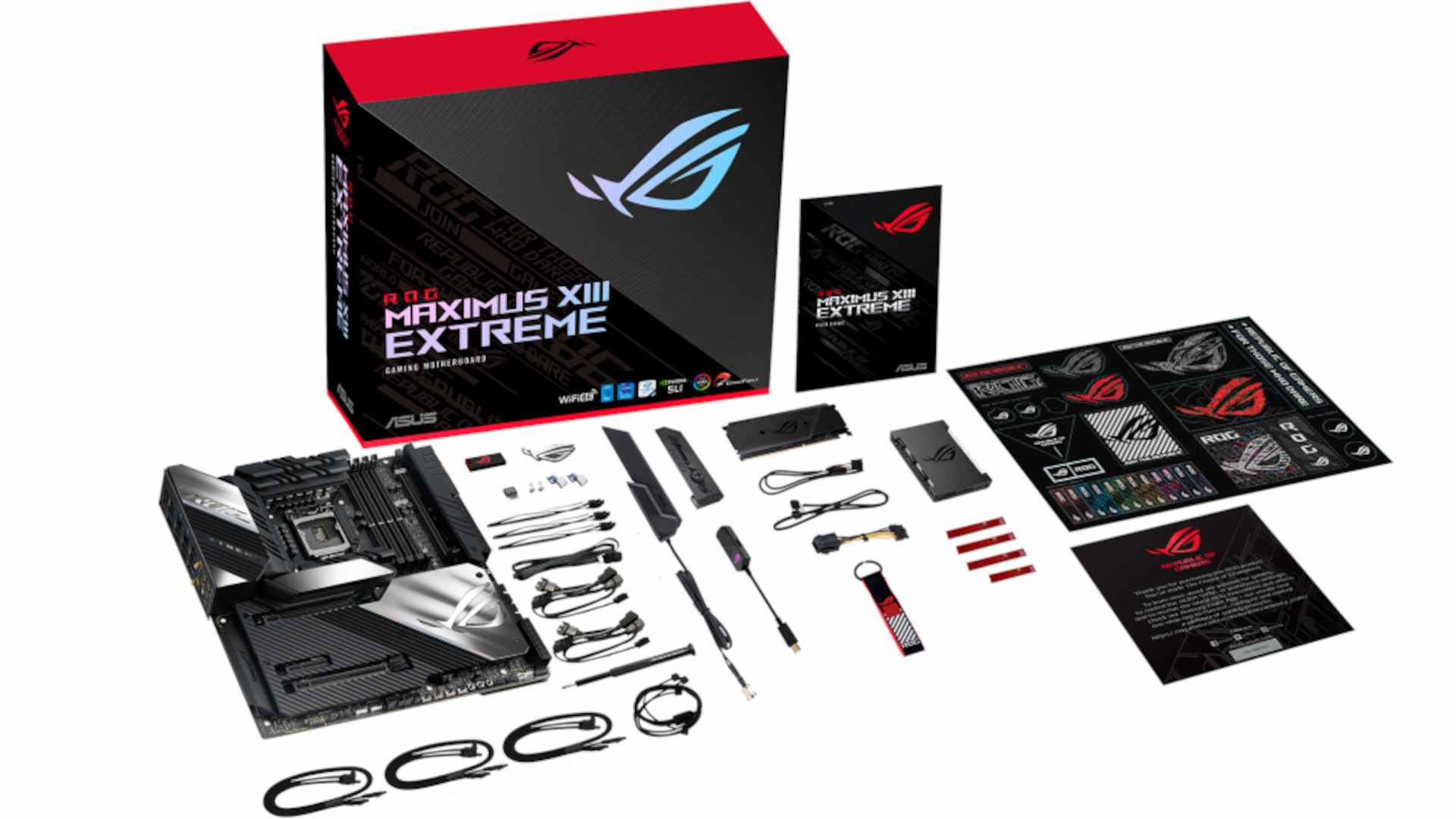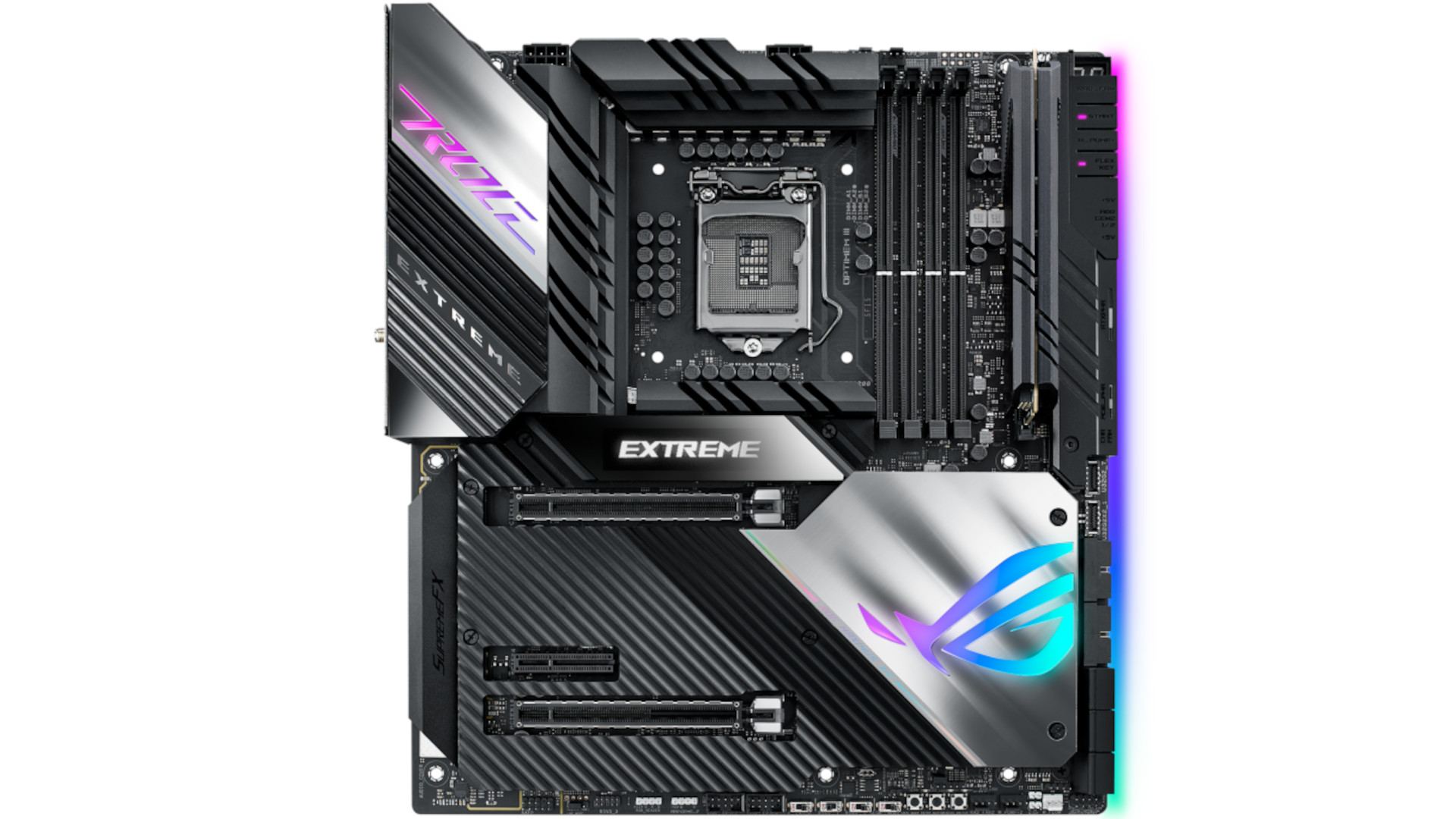We received five different motherboards from ASUS for the debut of Intel’s 11th Generation CPU, and we are about to examine the fifth and likely finest motherboard of them all. Check out all of our Z590 motherboard reviews to discover all the available models and more.
With its large selection of products, ASUS often has something for everyone. ASUS has a product line for you whether you’re searching for more entry-level/mid-range or genuine enthusiast-grade hardware. As we progress through this study, it will become clear why the MAXIMUS series is one of their top motherboard lines, as we will see in the near future.
Aside from its Glacial variation, the ASUS ROG Maximus XIII Extreme is one of the company’s most costly flagship boards. We’ll be looking at it in this review. Is the ROG Maximus XIII Extreme overkill or merely outrageous on the wallet with its extensive feature set and high asking price?
We have the BIG DADDY of ASUS’s motherboards in front of us. A motherboard with an absurd amount of features like the MAXIMUS XIII EXTREME will give you the best of the Z590 Chipset and the i9-11900K from Intel. The main drawback is that there isn’t much to compare it to right now, but hey, let’s see what this beast can accomplish!
The Rocket Lake-S CPUs from Intel are a hybrid of the two. It retrofits the Sunny Cove architecture found in 10nm Ice Lake processors from mobile devices that are now known as Cypress Cove while it is still at a 14nm node. Intel claims that its new cores can produce up to 19% more IPC than Rocket Lake-S from a year ago, yet the top i9 offering loses 2 cores while maintaining parity with the core count and thread count on other SKUs.
In addition to increasing the number of instructions per clock, Intel is also officially supporting DDR4-3200 memory with a few restrictions. Only the i9-11900K guarantees 3200MHz compatibility with Gear 1, whereas other processors are only officially supported at 2933MHz. The memory controller will essentially operate at 1:1 under Gear 1 and 1:2 under Gear 2, according to gears. The company warns that Gear 2 could result in a slight performance hit and increase in latency.
Additionally, Rocket Lake-S will now support PCIe 4.0 lanes directly through the CPU. Although the 500 series chipsets itself can only support PCIe 3.0 lanes, up to 20 PCIe 4.0 lanes are set aside for use. After that, more about the chipset.
Additionally, these CPUs will feature the original Tiger Lake processors’ Intel Xe graphics. Additionally, AVX-512 workloads and Intel Deep Learning Boost, which boosts VNNI for better AI performance, are now supported.

A Closer Examine of ASUS ROG Maximus XIII Extreme Z590
This is not only the priciest Z590 board we have examined, but it is also the only EATX board we have come across. Big, heavy, and massive are insufficient adjectives to adequately describe this beast; we require a completely new word!
Go big or go home, as they say in America, but ASUS is definitely not going home! Now is the time to take a closer look at all the ASUS ROG Maximus XIII Extreme Z590 has to offer, which is crammed with more features than one could possibly think.
On this board, ASUS really had no alternative but to use dual 8-pin EPS power connectors. Personally, I can see how they could have wanted to add a third but were unable to do so. Observe how they are also separated from one another rather being placed close to one another as is customary. We have a WB SENSOR and a single chassis fan header in between them. You can track temperature, flow rate, and leak detection using this sensor for water blocks. The EXTREME features on this board don’t even begin to scratch the surface yet.
Now let’s move on to the CPU fan headers, where we can also make out around half of the DeBug LED output.
We have 4 DIMM slots for RAM, which can accommodate up to 128GB of DDR4 RAM running at 5,333MHz in OC mode. Now, this is common to the majority of Z590 boards that we have observed and is likely caused by RAM and CPU resource constraints.
This is when things once again get fascinating! The DIMM.2 slot resembles a RAM slot, although it is made specifically for M.2 SSDs. There are a total of FIVE M.2 drives on the MAXIMUS XIII EXTREME thanks to the adaptor that ASUS has provided for this slot and which can fit two M.2 drives on it.

With 18+2 paired power stages, each of which is rated at 100 Amps, ASUS is once more operating in beast mode. This is completely insane and will enable you to test the limits of any CPU and board, even when using LN2 for benching!
As part of the overall EXTREME motif, ASUS placed a few buttons next to the DIMM.2 slot. One will let you operate the motherboard without having to attach a conventional power button. It will be simple for you to restart your system if you press the FLEX KEY button. The AURA illumination may be turned on or off, and you can program the FLEX key to boot into safe mode, among other things.
A huge cover spans the whole bottom half of the board, leaving only the PCIe slots and the very bottom exposed. You may access three of the M.2 drives by taking off this cover. When using an 11th Gen CPU, all three of these M.2 slots are PCIe 4.0 compatible. While the top slot only supports PCIe 4.0, the lower two slots also accept PCIe 3 M.2 SSDs. You’ll need to use the wonderful DIMM.2 extension card if you want to use a SATA-based M.2!
CABLES
| 1-to-3 ARGB splitter cable | 1 |
| 1-to-4 fan splitter cable | 2 |
| RGB extension cable | 1 |
| ROG weave SATA 6G cables | 3 |
| 3-in-1 Thermistor cables pack | 1 |
ROG FAN CONTROLLER
| ROG Fan Controller | 1 |
| Fan EXT PWR cable | 1 |
| ARGB input cable | 1 |
| USB input cable | 1 |
| ROG Fan Controller 3M Mounting tape | 1 |
| Fan Controller manual | 1 |
MISCELLANEOUS
| ASUS Wi-Fi moving antennas | 1 |
| Q-connector | 1 |
| ROG CLAVIS DAC | 1 |
| ROG logo plate stickers | 1 |
| ROG screwdriver | 1 |
| ROG stickers | 1 |
| ROG thank you card | 1 |
| ROG Graphics card holder | 1 |
Conclusion on ASUS ROG Maximus XIII Extreme Z590
This board is not intended for regular users, as I’ve already stated. It’s made for expert overclockers who want to make their 11th generation CPUs bleed and wail! You can control the board precisely how you want and push your components to their limits thanks to ASUS’ addition of all the hardware and customizability required.
To ensure that you are getting every last bit of performance from your 11th Gen CPU, ASUS has also added software and AI improvements. Although pricey, this board will enable you to push your components to the point of death, just millimeters away!

The quality was evident as soon as I removed the board from the packaging. It must be the heaviest motherboard I’ve ever had the pleasure of using, literally. Although I am aware that size doesn’t always indicate quality, in this instance it does! A free-range LN2 dispenser could be the only thing ASUS could have added to this board. The board performs just as well as it looks and feels wonderful! This Z590 board, I’m forced to admit, is the highest quality one I’ve had on my test bench in recent weeks.
For the MAXIMUS XIII EXTREME, I nearly feel as though I should eliminate this category. This board doesn’t receive a fair shake because, although performing on par with the majority of other Z590 boards, it wasn’t made to operate at stock settings.
When it comes to reviewing motherboards for a launch, I simply don’t have the time or room for the ASUS ROG Maximus XIII Extreme Z590, which is built for tweaking, configuring, and a ton of LN2, which I just don’t have! What I will say is that it will serve you quite fine even if you occasionally use it for simple gaming; there is no reason to believe differently.
For this board, there is simply too much to write, so I’ll just include a few of the examples that are still fresh in my mind. The DIMM.2, which is effectively a RAM slot that holds two M.2 drives, is one of the features I loved. This is a fantastic method to add more space to your board! Although I never have the chance to use the FLEX KEY button correctly, I think it might have a significant influence if you used this board on a regular basis. I am also a huge lover of this button.

Are you only looking to play games on a regular basis? If so, don’t; instead, look into the MAXIMUS XIII HERO. Do you NEED to maximize the overclocking capabilities of your brand-new Intel 11th Generation CPU? Then, sure, you should get the ASUS ROG Maximus XIII Extreme Z590, but if this is the case, I’m also assuming that the cost won’t deter you too much because you’re probably used to paying top dollar for the gear you need to accomplish your goals!
Is ASUS ROG Maximus XIII Extreme Z590 good?
The ASUS ROG Maximus XIII Extreme Z590 motherboard, which costs around USD 1,000 worldwide includes almost every feature you could want in a motherboard: customization, tough components, a solid build, a plethora of connectivity options, overclocking options, and much more.
The board’s high asking price, on the other hand, indicates that it is not for everyone. Gamers who only want something to work while they play may want to look for something a lot less expensive than this beast of burden.
So who is this motherboard aimed at? It was designed for true enthusiasts who want to fine-tune every aspect of their system to get the fastest possible speed. It will also cater to overclockers who want to push the Rocket Lake-S platform to its limits.
With a plethora of capabilities at its disposal, the ASUS ROG Maximus XIII Extreme Z590 is unquestionably one of the top dogs in the Z590 lineup. This is why we have given it our approval. Every self-respecting enthusiast or overclocker contemplating building an overkill Rocket Lake-S computer should include it in their parts list.
In comparison to the other Z590 boards we’ve tested, performance was average on both sides. On the one hand, the Extreme was little lower than normal generally, while the Extreme Glacial was significantly higher.In our testing, gaming performance was above average, scoring and performing well. In the end, it’s difficult to detect the difference between the two boards or any others we’ve evaluated thus far.
Memory testing went well, with both boards running our DDR4 3600 kit at 1:1 and no difficulties with our mediocre DDR4 4000 kit (running at 1:2). Both boards handled overclocked our Intel Core i9-11900K without trouble thanks to overbuilt VRMs (and water cooling on the Glacial).
Is ASUS ROG Maximus XIII Extreme Z590 good for gaming?
We upgraded our test system to Windows 11 64-bit OS (20H2) as of March 2023 and applied all malware mitigations. We have transitioned to using just PCIe 4.0 hardware components. We upgraded our storage system to a 2TB Phison PS5-18-E18 M.2 and our video card to an Asus RTX 3070 TUF Gaming.
F1 2020 and Far Cry: New Dawn have been upgraded in addition to the hardware upgrades. Unless otherwise stated, we utilize the most recent non-beta motherboard BIOS that is publicly accessible (typically during new platform launches). What hardware is being used?
Hardware being used is:
- CPU – Intel i9-11900K
- RAM – 32GB DDR4 4000mhz\
- GPU – RTX 3070 ASUS TUF Gaming
- PSU – CORSAIR AX1200i
The CPU’s stock frequencies (including stock Thermal Velocity Boost) are used for our usual benchmarks and power tests, and all power-saving features are turned on. The BIOS is configured with optimized defaults, and XMP profiles are used to configure the RAM. Windows is configured to use the balanced power plan for this baseline testing.
Recent game updates include Far Cry: New Dawn and F1 2020. The Ultra setting runs the games at 1920×1080 resolution. The CPU tends to have less of an effect as resolution increases. The purpose of these settings is to see whether there are any performance variations between the most popular resolution and the settings that people use or aim for.
Both the ASUS ROG Maximus XIII Extreme Z590 and Extreme Glacial performed admirably in our gaming/graphics testing, achieving average or above average scores in the 3DMark tests and real games tests. Nothing unusual was visible to us here.
Which slots does ASUS ROG Maximus XIII Extreme Z590 have?
Although the RGB lighting on the Maximus XIII is ostentatious, it does not dominate its rugged appearance. The ASUS AURA sync technology is compatible with the RGB lighting found on the Z590 chipset, back armor, and aluminum I/O cover.
The board includes a 1.77-inch OLED display in the center to set it apart from the group of other pricey motherboards. This shows boot information, CPU temperature, and a variety of other rig-related data. You may even add your own picture or GIF to the display to personalize it. However, use additional caution while handling the display because it is easily covered in dust, fingerprints, and even scratches.
The 18+2 teamed power stages regulate the board’s power supply to the CPU and other functions. With the enormous power needs of the Intel Core i9-11900K, the Rocket Lake-S flagship processor, more phases imply cleaner power to the CPU and less strain on any one VRM for life. As if that weren’t enough, ASUS has added a substantial heatsink bank to the VRMs to reduce temperatures and lengthen their lifespan.
There are four DIMM slots on the right side of the LGA 1200 socket, which can accommodate up to 128GB of DDR4 Memory at a speed of 5333MHz. The DIMM.2 slot on the PCB is right next to it. The accompanying DIMM.2 adaptor may be used to put M.2 drives in the DIMM.2 slot, which is intended for M.2 drives but seems to the uninitiated to be a RAM slot.
Given that the Processor only has 20 PCIe 4.0 lanes, the board only has two PCIe 4.0 x16 slots. Three NVMe M.2 slots are sandwiched between the x16 slots and are masked by the OLED panel and armor.
With high-performance M.2 SSDs, the OLED panel and armor do feature thermal pads that serve as a heatsink. The main issue is that when the armor and panel are closed, M.2 SSDs with integrated heatsinks will not fit.
There are six SATA III connections along the right edge of the ASUS ROG Maximus XIII Extreme Z590, which will please users of HDD and 2.5-inch SSDs. Their location makes managing cables simpler. The DIMM.2 slot and some SATA connectors do, however, share bandwidth.
Its rear I/O offers consumers a wide range of possibilities. Eight USB 3.2 Gen2 Type-A ports in total, two Thunderbolt 4 Type-C ports, an HDMI, a S/PDIF out, BIOS FlashBack and Clear CCMOS buttons, a WiFi 6e antenna, and five lighted 3.5mm audio jacks are all included.
Two awkwardly placed 8-pin EPS CPU connections are located at the top of the ASUS ROG Maximus XIII Extreme Z590, which can cause some cable management issues. A 4-pin Chassis Fan and a Water Block Sensor for liquid cooling systems are sandwiched in between them. Two 4-pin CPU Fan headers are located immediately after the EPS connection on the right.
The Power and Flex Key buttons are located on the top right-hand side, along with the Q-LED Reader for debugging. By default, the Flex Key is set to reset, however, you may modify this via the BIOS to any BIOS-related button you wish. Moreover, two 5V 3-pin RGB headers and status LEDs for the radiator fan and pump are included.
Can you overclock with ASUS ROG Maximus XIII Extreme Z590?
These motherboards were just as simple to overclock as any previous one up until this point. The Asus BIOS places all the options you want at your fingertips, eliminating the need to go between sections to locate what you’re searching for. The LLC7 setting effectively controlled VDroop. This permitted a little decrease from the BIOS setting. The vdroop was considerable if we used LLC4 as advised by the BIOS.
We chose to test the i9-11900K sans AVX-512 instructions in order to overclock it. Thermal limitations prevent you from unlocking all of the power restrictions since the CPU will quickly exceed 100 degrees Celsius. We eliminated that variable since every board differs in how closely it adheres to (or does not adhere to) Intel requirements.
The bottom conclusion is that you must specify a considerable offset relative to non-AVX-512 loading if you must use these instructions. In order to do that, we chose a 5.1 GHz overclock at around 1.3V. Due to thermal limitations, our CPU consumes about 225W in this arrangement, which falls between standard power consumption (195W) and AVX-512 power use (265W).
How much power does ASUS ROG Maximus XIII Extreme Z590 use?
In order to test for power usage, we utilized AIDA64’s System Stability Test with Stress CPU, FPU, and Cache enabled. Rocket Lake requires that we turn off the AVX-512 instruction sets because, otherwise, some boards’ temperatures can get out of hand even at stock rates. A Kill-A-Watt meter is used to obtain the wattage measurement from the wall in order to record the complete environment. All other components are the same; the motherboard is the only variance.
The air-cooled Extreme’s power usage ratings, at 164W, were just below average. We had the lowest idle use ever at 48W, while load peaked at 280W. The Extreme Glacial was on the upper side of typical at 181W with all of its watercooling components (pump and extra fan). Here, load power usage was tied for the highest at 291W, but idle power use was likewise low at 61W.
ASUS ROG Maximus XIII Extreme Z590
-
Performance - 97%97%
-
Price - 97%97%
-
Value - 97%97%

